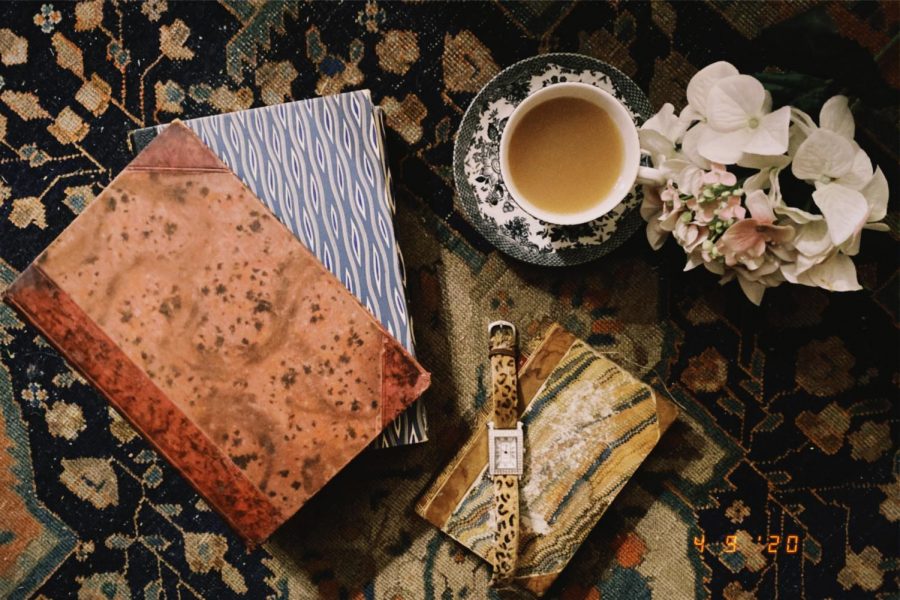Lovelace’s ‘break your glass slippers’ breaks glass ceilings
Known for her award-winning collection of poetry “The Princess Saves Herself in This One,” Amanda Lovelace continues her infectious writing themes in “Break Your Glass Slipper.”
April 10, 2020
Amanda Lovelace’s new book, “break your glass slippers,” reached both physical and metaphysical (Kindle, anyone?) shelves on March 17. This book of poems centers around a Cinderella-esque theme, encouraging readers to break their metaphorical glass slippers and escape their own emotional or physical imprisonment by redefining themselves to their own set of values. The content of the poems deals mainly with topics such as the absurdity of pitting women against other women, eating disorders, misogyny, abusive relationships, the universal longing for validation, mental health issues, and patriarchal beauty standards. The book also contains multiple illustrations.
I’m going to be honest with you: Amanda Lovelace is a bad poet. It may appear rude of me to say, but it’s true. Her poetry lacks imagery, vivid descriptions, non-cliche analogies, and rhythmic flow. The metaphors and similes of her poems are boring and overused, her symbolism is surface-level at best and easily discernible, and she lacks the skill of a trained or talented poet. “break your glass slippers” contains nothing extraordinary; I didn’t discover a singular new idea or thought that I had not previously known or contemplated before reading all 160 pages.
Yet, for some reason, I still find myself reading her books, pouring over her basic semantics and rudimentary style. I still await a new release date with passionate enthusiasm, and I sob over each publication when I’m done reading just as I did the last. I ingest her ill-fitting clauses and choppy phrases like candy; they nurture my soul in a way that Dickinson and Keats can’t, for her poetry is the poetry of every woman.
She writes about the pain that I experience every day; she writes about the pain that has driven my friends to death and my idols to madness. She writes about the anguish of looking in the mirror and realizing you don’t recognize the person staring back or the relief accompanied by being honest with yourself for the first time in months. When she writes I feel as if I am listening to my sister crying on the phone or my best friend laughing in the car. Maybe I’m even listening to myself, to my own subconscious, venting her grievances and insecurities in a disjointed stream of bitter consciousness.
Poetry takes madness, the kind of madness that makes humans stop and admire the way the creek shines like their mother’s wedding ring or the way their bones ache like their heart used to, and it puts it in a heart-shaped locket of structure and fluidity, creating order out of chaos. Lovelace, however, disregards the locket of poetry, preferring to let her madness spill onto the pages of her books like coffee after a restless night or sparkling cider after a funeral. There is a strange mania that characterizes her writing, but melancholy, that inexplicable sadness that accompanies the human cycle of continuous living and dying, exists as her signature trademark.
Amanda Lovelace’s poetry is bad, but it is art, and I sigh in utter appreciation every time I read it, the same way I sigh when I view “The Birth of Venus” by Sandro Botticelli or hear “Cello Suite No. 1” by Bach.
Art does not have to be beautiful to be meaningful, it doesn’t have to be groundbreaking to be influential, and it doesn’t have to be good to be worthwhile. Art, at its core, strives to find the beauty in everything, even the cracked and impaired, the shattered and splotchy. Many critics hate Lovelace’s poetry because of its lackluster style and repetitive themes, but I love it for its familiar sounds and resounding pain. Every coin has another side and every person has an extra smile. The beauty in life lies hidden, waiting to be uncovered by tepid arms, shaky with anticipation.









